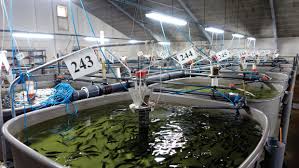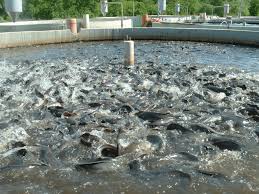Fish farming systems can be classified into different categories, most especially based on the exposure to natural climates and the influence of weather. The three main classifications are: Open Systems, Semi-Closed Systems, and Closed Systems.
Culture techniques are either monoculture (culturing of a species of fish in a culture environment at a particular time) or polyculture (rearing of more than one species of fish in a culture environment at a particular time).
A hatchery is a place where the process of producing young fish (fingerlings) takes place. Hatcheries are important for the growth and development of fish farming to ensure the availability of quality fish seeds that can meet the required quantity all year round. Hatcheries can be indoor or outdoor.
Read Also: Health Benefits of Sidaacuta Tea
Procedure for Efficient African Catfish Breeding

Below are the 18-step procedures for efficient African Catfish breeding:
Step 1: Identify and separate the sexes.
Step 2: Select and check for a gravid female (female with ripe eggs).
Step 3: Weigh the female fish. Dry the African Catfish pituitary gland, grind the pituitary using a pestle until it becomes powder, add 1 ml saline solution, collect the solution, and inject the female fish using a hypodermic syringe.
Step 4: Prepare the female Catfish for injection. The fish should be injected above the lateral line with the needle at 45 degrees to the body of the fish.
Step 5: Isolate the injected fish in a comfortable, big bowl and wait for 10 to 12 hours.
Step 6: Prepare to strip the fish and set up the incubator.
Step 7: Bring the fish out after 10 to 12 hours gently and cover the head with a clean, moist towel.
Step 8: Wipe the body of the fish dry using a dry, soft towel.
Step 9: Strip the fish (press the eggs out of the fish).
Step 10: Weigh the stripped eggs. This helps to have an idea of the expected fry.
Step 11: Bring the male out, kill it, turn the belly up, and cut it open.
Step 12: Remove the milt sac.
Step 13: Cut the testicles into bits to release the sperm.
Step 14: Add saline solution to the milt.
Step 15: Pour the mixture of saline solution and milt onto the stripped eggs in the bowl, mix thoroughly, and add fresh, clean water. Continue mixing to prevent the eggs from sticking together.
Step 16: Spread the eggs inside the incubator on the spawning sponge. The spawning sponge is completely immersed in water and sits on the spawning net, which keeps it suspended in the water. The net is held in place by pegs.
Step 17: Wait for 20 to 36 hours. After 20 to 36 hours, remove the sponge and spawning net. By now, the fry would have emerged from the hatched eggs and would have gone to the bottom of the net.
Step 18: Observe the newly hatched eggs, with the yolk still visible and attached to the fry.
Read Also: Benefits and Uses of Utazi Leaf
Artificial Propagation Methods in Fish Farming

The major practicable means of providing enough quality seed for rearing in confined fish enclosure waters, such as fish ponds, reservoirs, and lakes, is through artificial propagation methods. The growing importance of fish farming has compelled improvements in technologies necessary for securing the initial and basic requirements for productive aquaculture.
Do you have any questions, suggestions, or contributions? If so, please feel free to use the comment box below to share your thoughts. We also encourage you to kindly share this information with others who might benefit from it. Since we can’t reach everyone at once, we truly appreciate your help in spreading the word. Thank you so much for your support and for sharing!
Read Also: Poor Hygiene: Definition, Signs, Causes and Treatment

